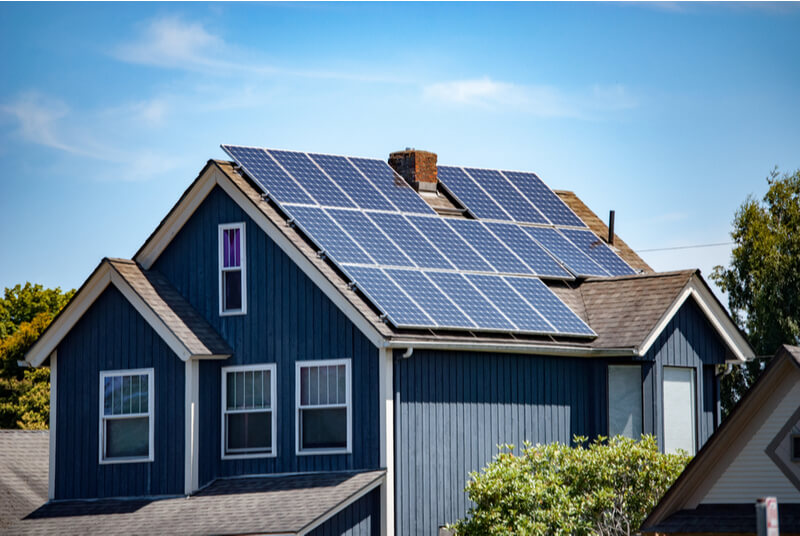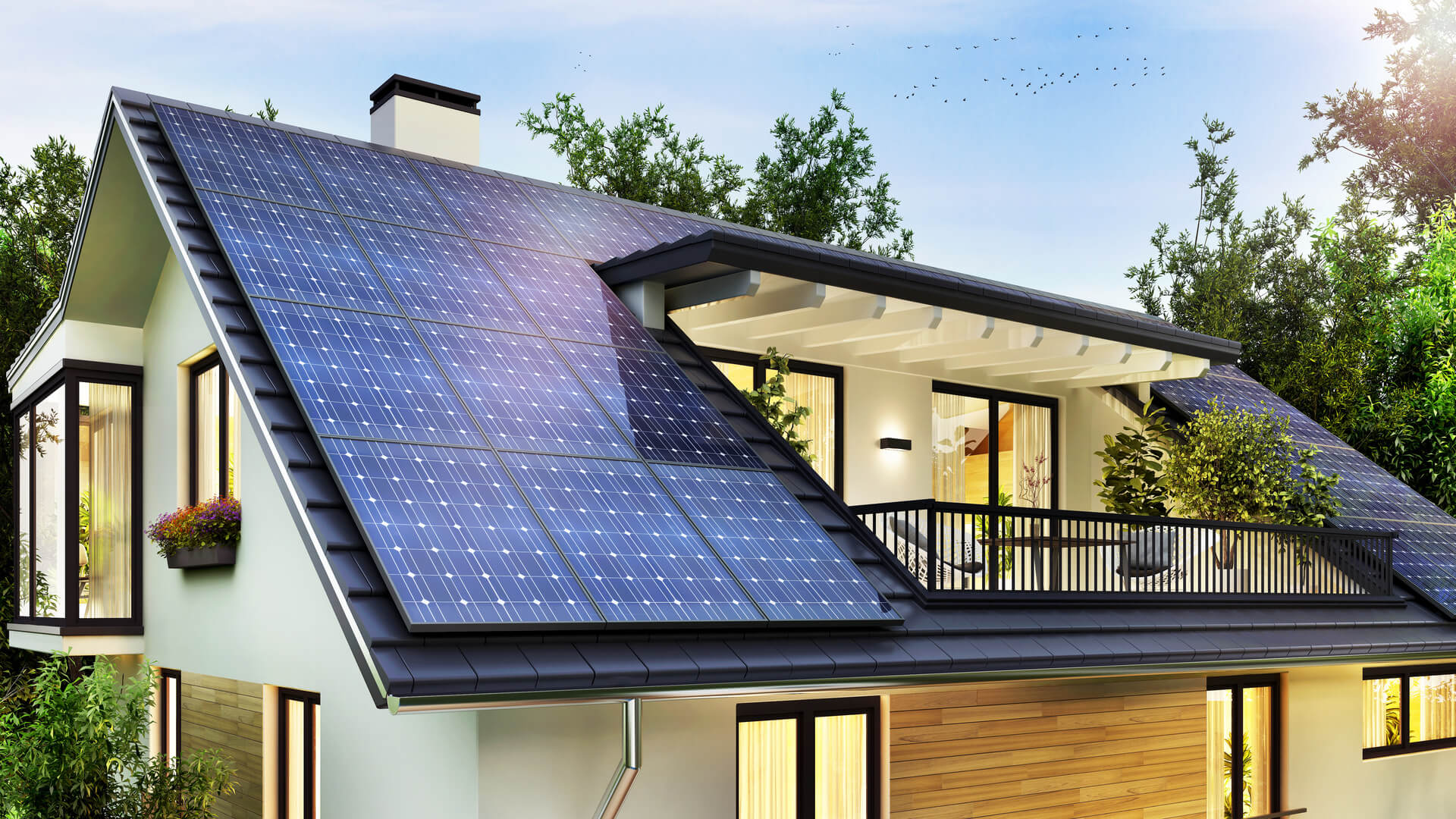How Big Is A Solar Panel For A House? | Standard Solar Panel Sizes – How Big Is A Residential Solar Panel?
How big is a residential solar panel?
People are increasingly interested in solar power as a way to reduce their reliance on the grid, and there are a lot of questions about how it all works. In this post, we’ll answer the question: how big does a solar panel need to be to power homes?
Standard solar panel Sizes
There are a few standard solar panel sizes in use today, as follows:
The most common residential solar panel size is 65 inches by 39 inches, or 5.4 feet by 3.25 feet. This size of panel typically produces between 250 and 270 watts of power.
If you are looking to power your entire home with solar panels, then you will need a larger system that can produce more than 1 kilowatt of electricity.
Solar panels come in a variety of standard sizes. Solar panels for rooftop solar systems are often made up of 60 solar cells, while commercial solar installations generally use 72 solar cells. Residential solar panels are 5.5 feet long and 3.0 feet wide. The size varies depending on the manufacturer, as well as how the solar panel is made. Residential solar panel systems often consist of 20 to 25 panels.
Average energy usage

To estimate the number of solar panels you need, it is important to understand how much electricity you use in an average year. The average American household uses around 10,800 kWh/year of electricity. You can use this information to help you determine how many solar panels you need to power your home.
There are variations in houses size and energy usage from state to state due to the sun’s irradiance. Some states, like Florida, get more sunlight than others, so you may need a different number of solar panels depending on where you live.
Once you have determined how many kilowatt-hours of energy your home uses per year, you can estimate how many solar panels it will take to power your house.
Solar panel output
A solar panel is rated by its power rating, which is measured in watts. This rating tells you how much power the panel will generate. It is important to choose a solar PV panel with a power rating that meets your needs.
A solar panel is a device that converts sunlight into electricity. A typical solar panel will generate between 250 and 400 watts of power, depending on the size and type of the panel. This amount of energy is enough to power most homes.
There are a variety of solar panels available on the market, each with its own power rating. If you have a small property or want to generate more energy per panel, then you can opt for solar panels with a higher power rating. However, they will be more expensive.
A solar panel output varies depending on the time of year. In winter, there is a significant decrease in sunlight hours which results in a lower production of energy from the solar panels. Conversely, in summer there are more sunlight hours available which results in higher production of energy.
How Do Solar Panels Work?
Solar panels are made up of many photovoltaic cells. When sunlight shines on a solar module, the photovoltaic cells convert the sunlight into electricity. The more sunlight a solar panel receives, the more electricity it will produce. Solar panels work best on clear days when there is no or little shade.
Some solar panels have tracking devices that move to follow the sun. Trackers maximize how much sunlight a solar panel can absorb throughout the day, and they make up around 25% of the solar panel cost. If you choose not to use a tracker, you should make sure you place your solar panels in an area where they will receive the most sunlight.
A full solar system for a home is made up of several components:
- Solar cells (cells that convert sunlight into electricity)
- Inverters (converts current from DC to AC)
- Racking system (connects solar cells to inverter and tracks system’s movement)
- Other sealing and structural hardware like mounting feet, screws, wires, etc.
Solar panels and most of the other components in a full solar system for homes are similar to the components in stand-alone solar energy systems.
Types of Solar Panel Systems
A grid-tied solar system is the most common type of solar panel system; they use an electricity grid to power the panels. If you have a grid-tied system and the power goes out, your solar system will not work. Grid-tied with battery backup systems has a backup battery that powers the panels in case of outages. Off-grid systems do not use an electricity grid.
The size of your solar panel system will depend on how much electricity you use in an average year. If you use more electricity than your solar panels can generate, you will need to buy electricity from your utility company. However, if you use less electricity than your solar panels can generate, you can sell the excess energy back to your utility

Grid-Tied System
Grid-tied systems are the most common and least expensive type of solar power system. These systems are connected to your home’s utility grid, which means that they will send power to your home when they produce more energy than you need, and they will pull power from the grid when they produce less energy than you need.
Grid-Tied With Battery Backup
Battery-backed systems use a battery to store excess power generated by solar panels. When the sun shines, your solar panels will generate power that is sent to the battery. The battery will then store the power until it is needed. When the sun goes down or there is a power outage, the battery will provide power to your home. This type of system allows you to use solar power even when the sun isn’t shining. It is also ideal for homeowners who want the security of knowing that they will have power during a power outage.
Off-Grid System
An off-grid solar system runs independently of the power grid. Homeowners with off-grid systems use batteries to store electricity for their appliances and devices, making it possible to live completely “off the grid.” Off-grid solar systems require batteries and an inverter to convert the power generated by the solar panels into power that is compatible with your appliances.
An off-grid solar system can be a great option for homeowners who want to be self-sufficient. Off-grid systems can be more expensive to install than grid-tied systems, but they can provide homeowners with a lot of flexibility.
Solar system size calculator
To size solar panels, you need to calculate how many watts your home uses. Once you have that number, you can use a solar system size calculator to find the right-sized system for your needs. Most solar systems are measured in watts, so this is the easiest way to compare different solar panel sizes.
Household Details
Most American houses use around 10,800 kWh of electricity each year. That’s the equivalent of around 220 watts per hour. If you want to power your entire home with solar, you’ll need a system that can generate at least that much electricity.

Battery storage
If you want to include battery storage with your solar system, you’ll need to account for the added wattage. Batteries can add an extra 1,000-2,000 watts to a solar system, so be sure to factor that into your calculations.
Your system size results
The calculation is based on each user’s average daily data production. This data may be used to establish the size of your system, estimate storage needs, and pick appropriate hardware. Please keep in mind that this calculation is very basic and does not take into account many factors such as how much shading the panels will see, how much energy you get from the sun, how efficient your household appliances are, how efficiently the inverter operates, and how well matched your system components are.
Frequently asked questions about standard solar panel size
How big is a residential solar panel?
The typical dimensions of a regular residential solar panel today are 65 inches by 39 inches, or 5.5 feet by 3 feet, with some variation among manufacturers. The dimensions of the solar panel depend on the size of the cells used, which is determined by how much power it has to produce.
How big is a 300w solar panel?
The physical size of a 300-watt solar panel is determined by the number and size of the solar cells utilized in its production, as well as the cell efficiency. The most frequent area is 1640mm x 922mm (64.57” x 39.06”), although the thickness varies according to the manufacturer. The length and width of a solar panel will depend on the size and number of cells used in its production, as well as cell efficiency.
Can your roof support a solar panel system?
Your roof can support a solar panel system, but it depends on the age and condition of your roof. If you are unsure whether your roof can support a solar system, it is best to consult with a professional installer. They can help you assess your roof’s condition and recommend the best solar system for your home.
How many solar panels are needed to power an average house?
In general, a home solar system consists of 20 to 25 panels, although the precise number you’ll need will depend on a variety of circumstances, including where you live and how much energy you consume.
If you’re looking to buy solar panels, be sure to compare prices and products from a variety of different manufacturers. Make sure to ask about the warranty, as well as how long it will take for the panels to be installed.
